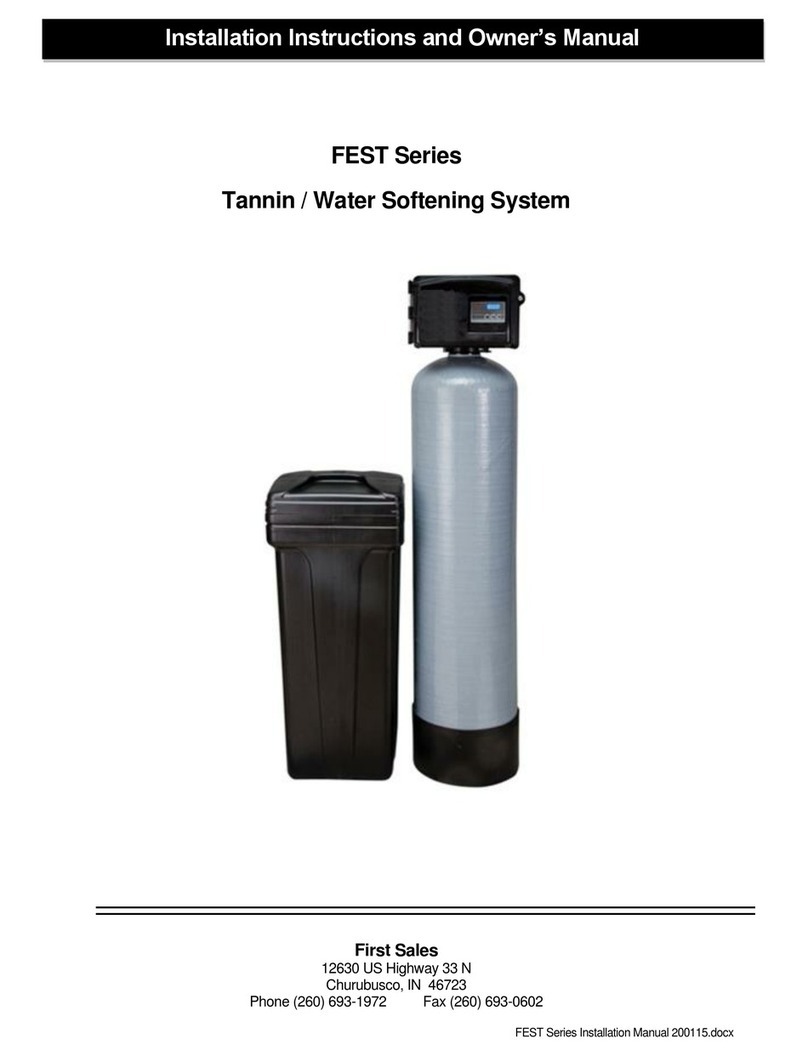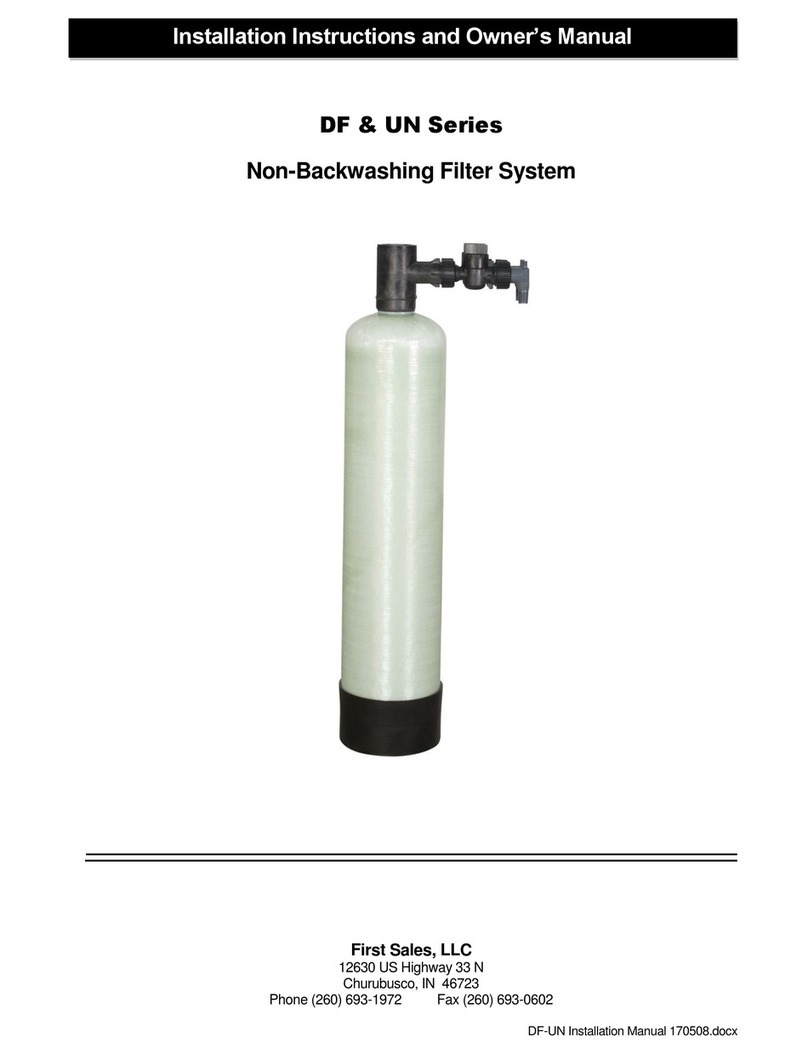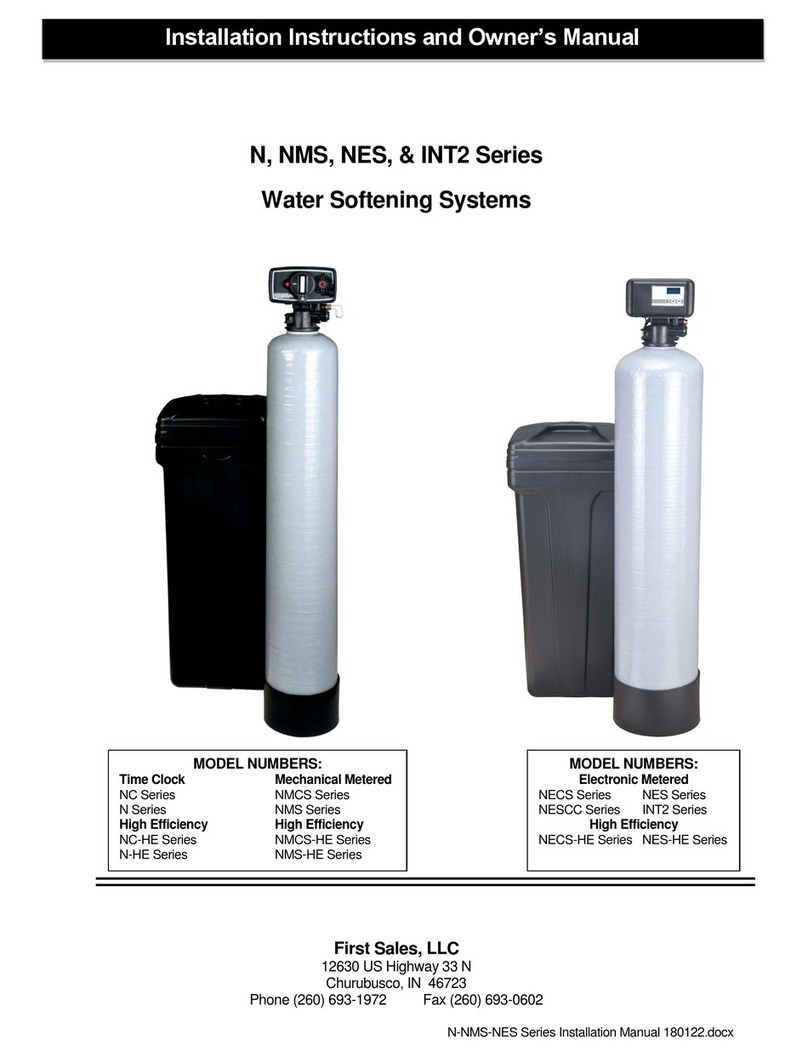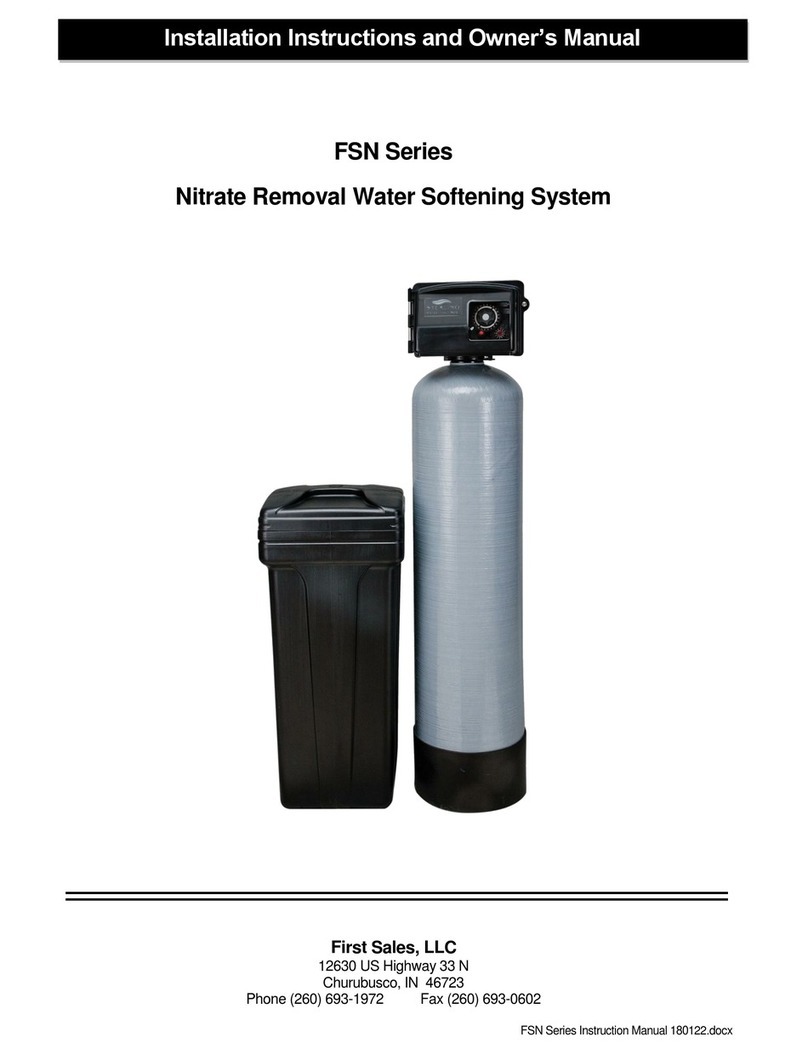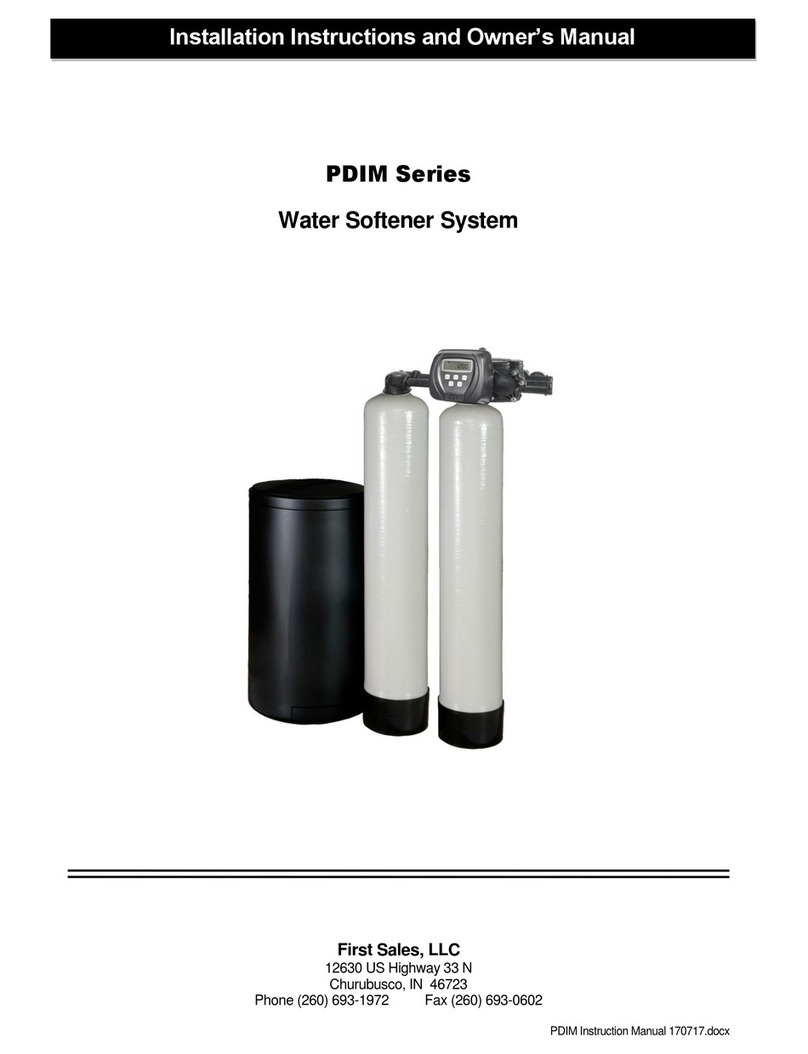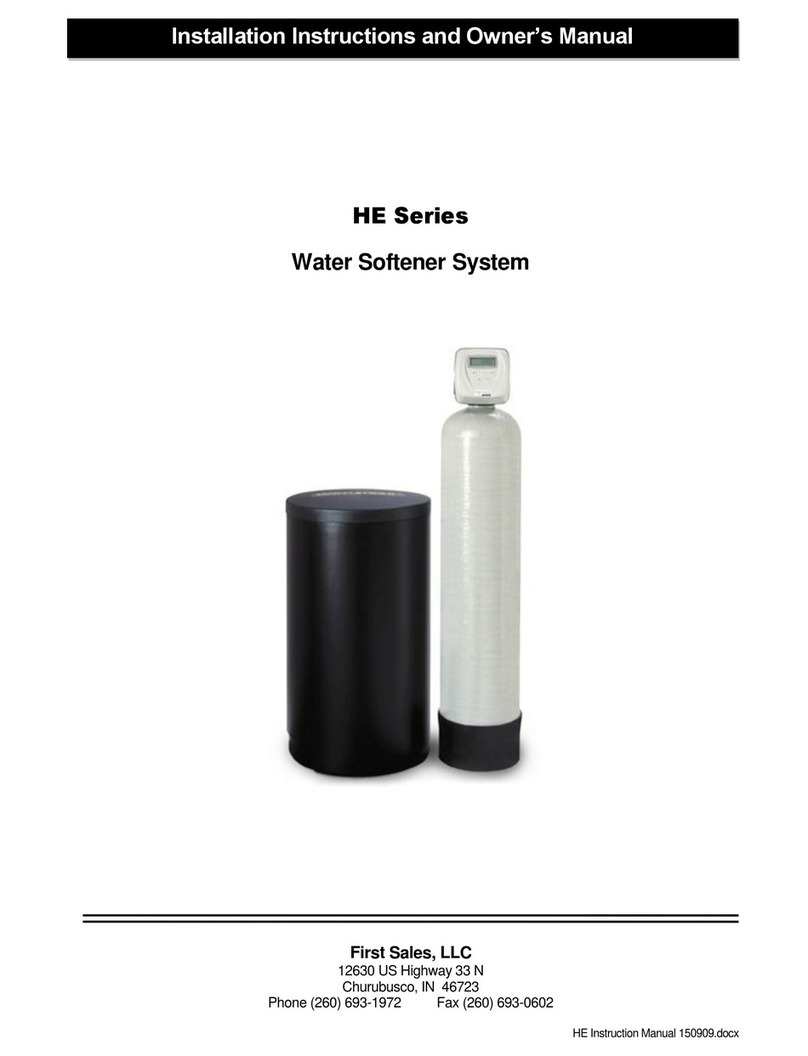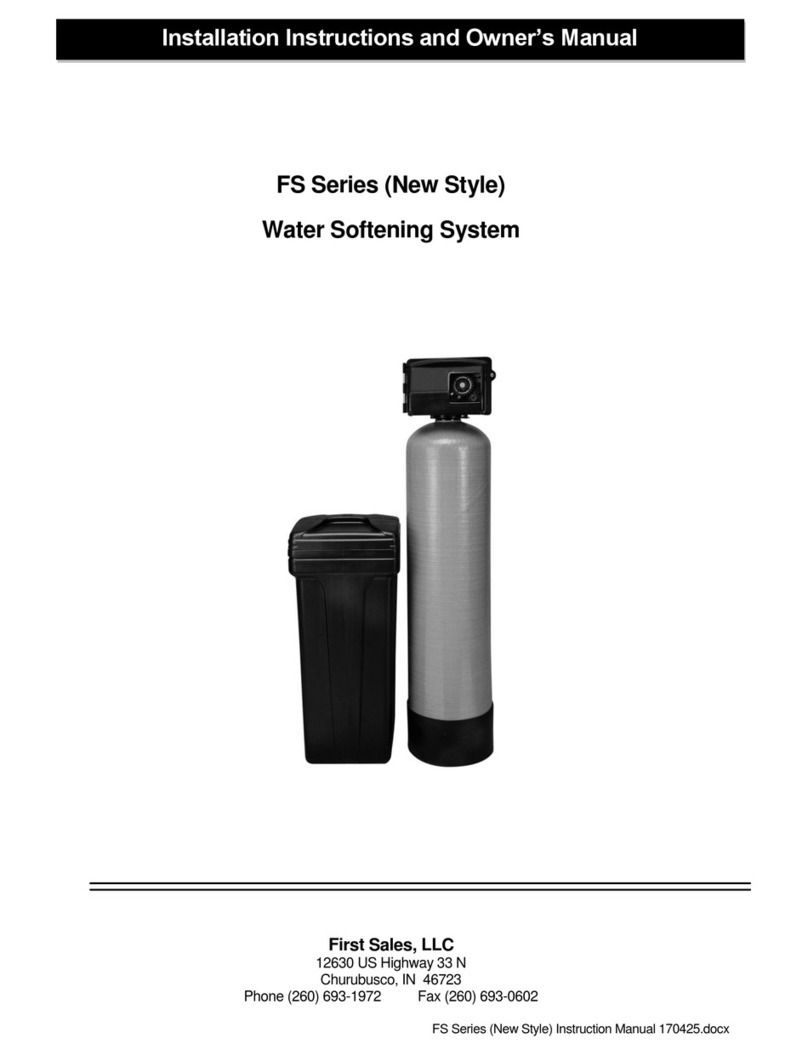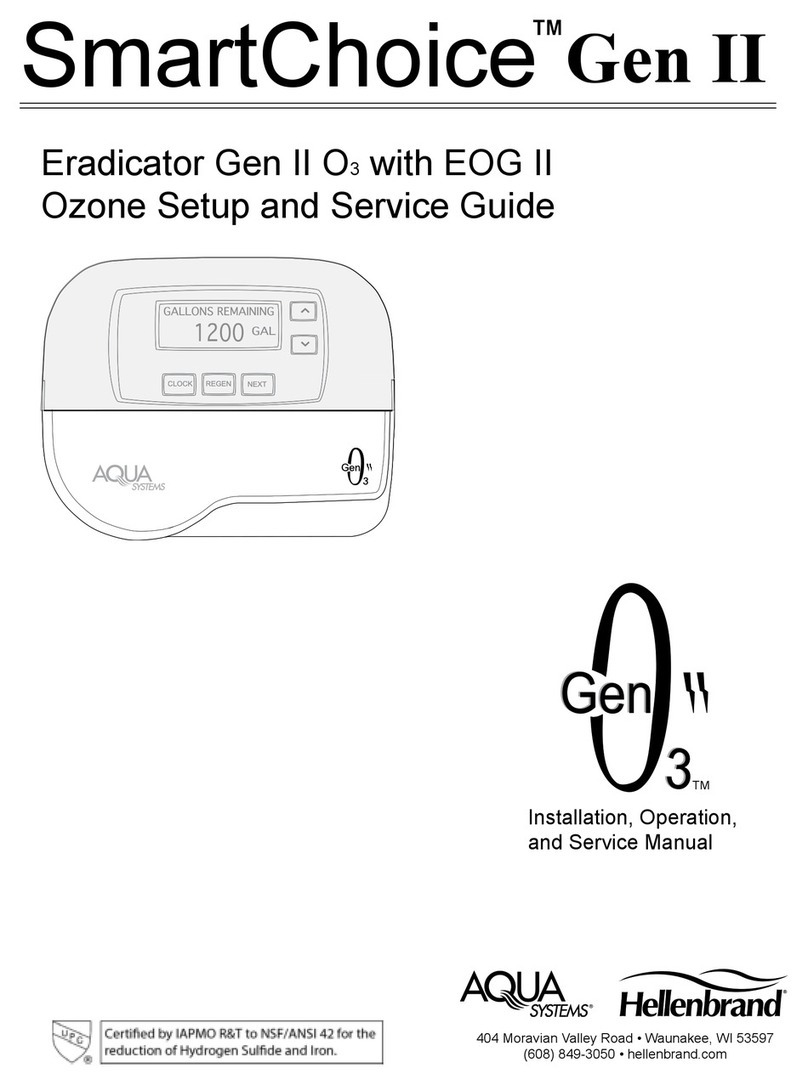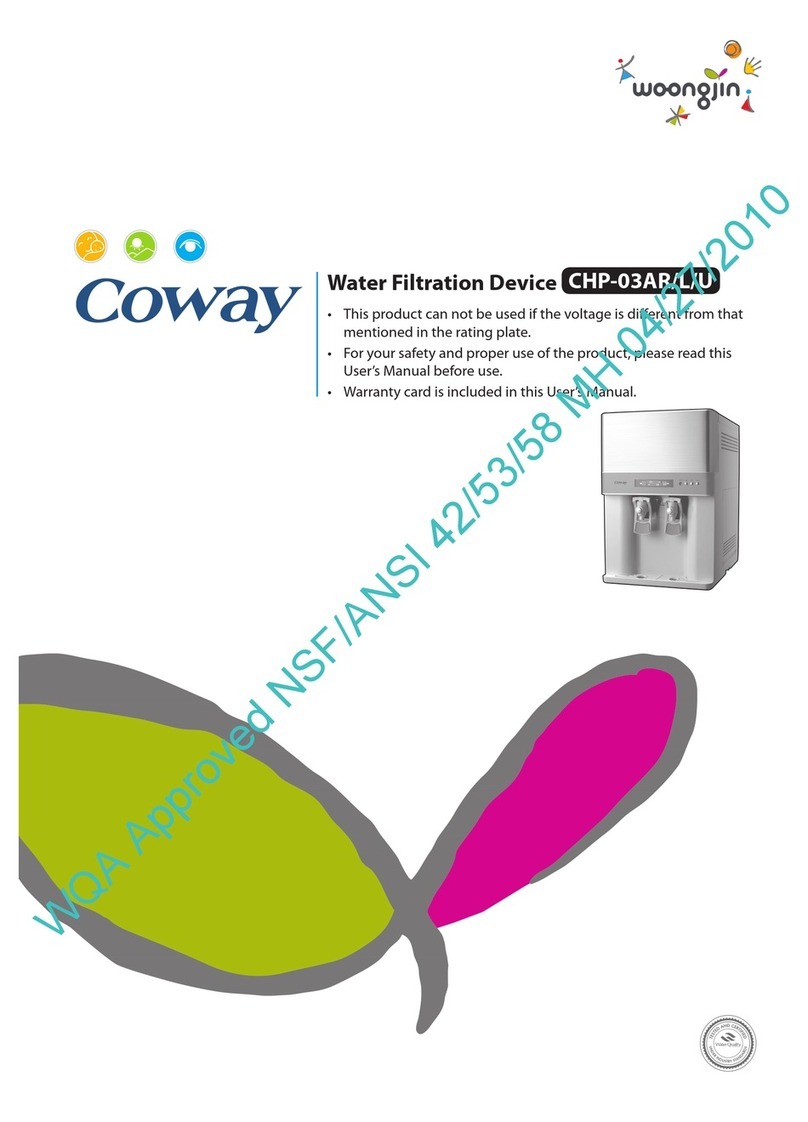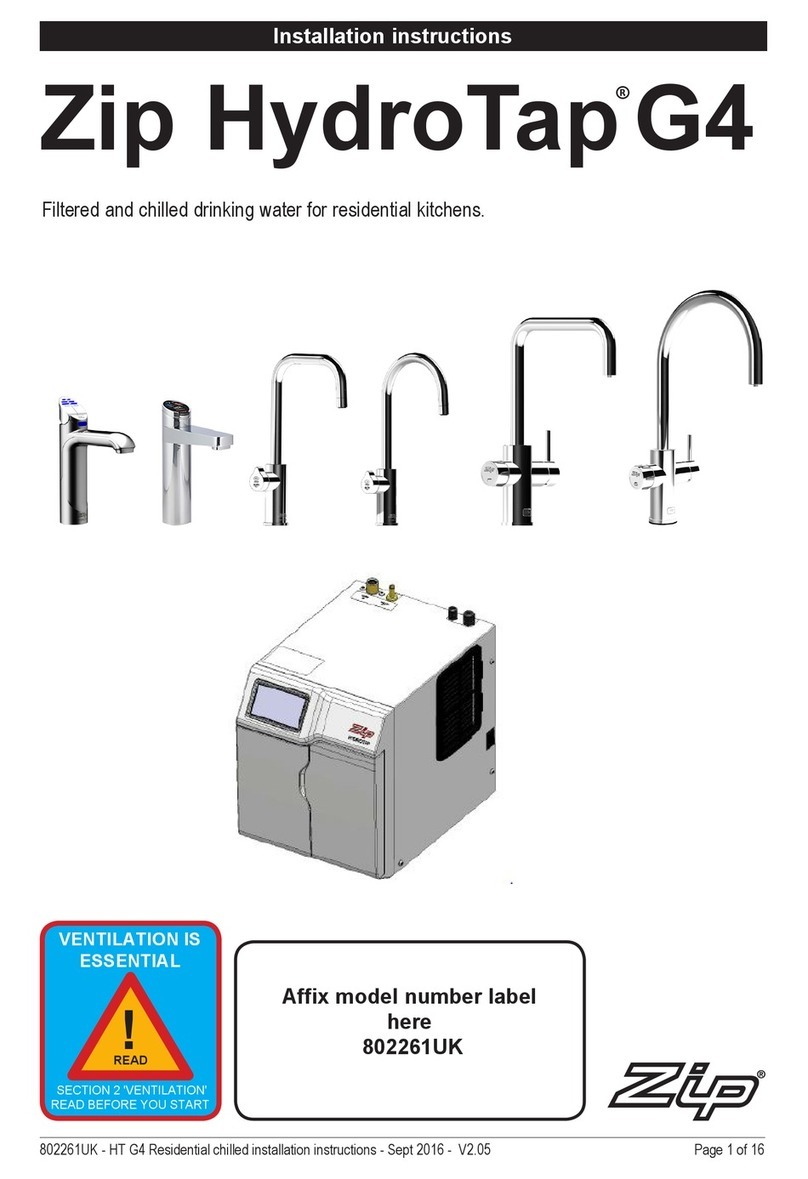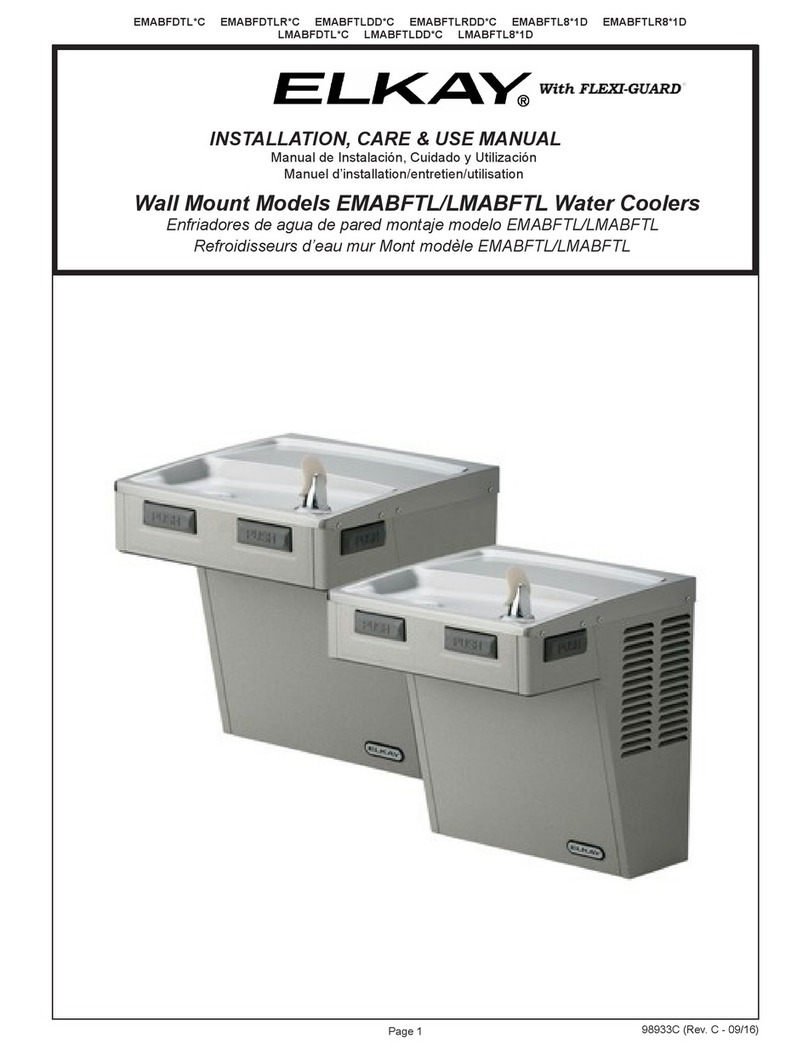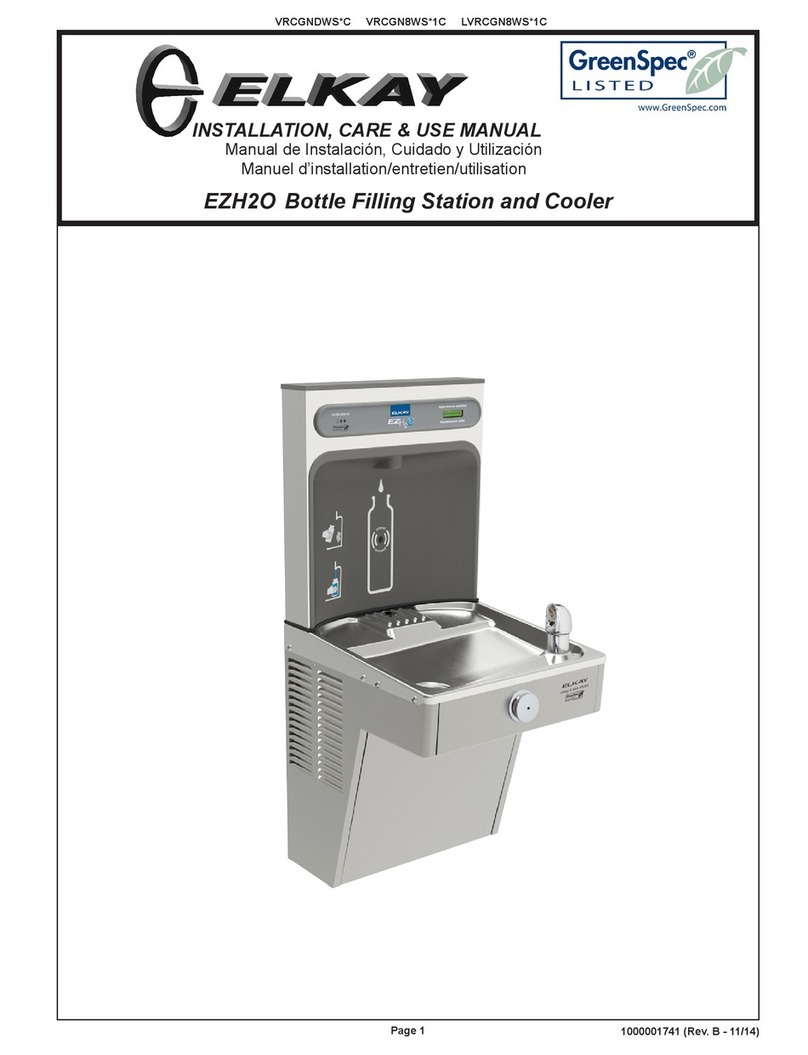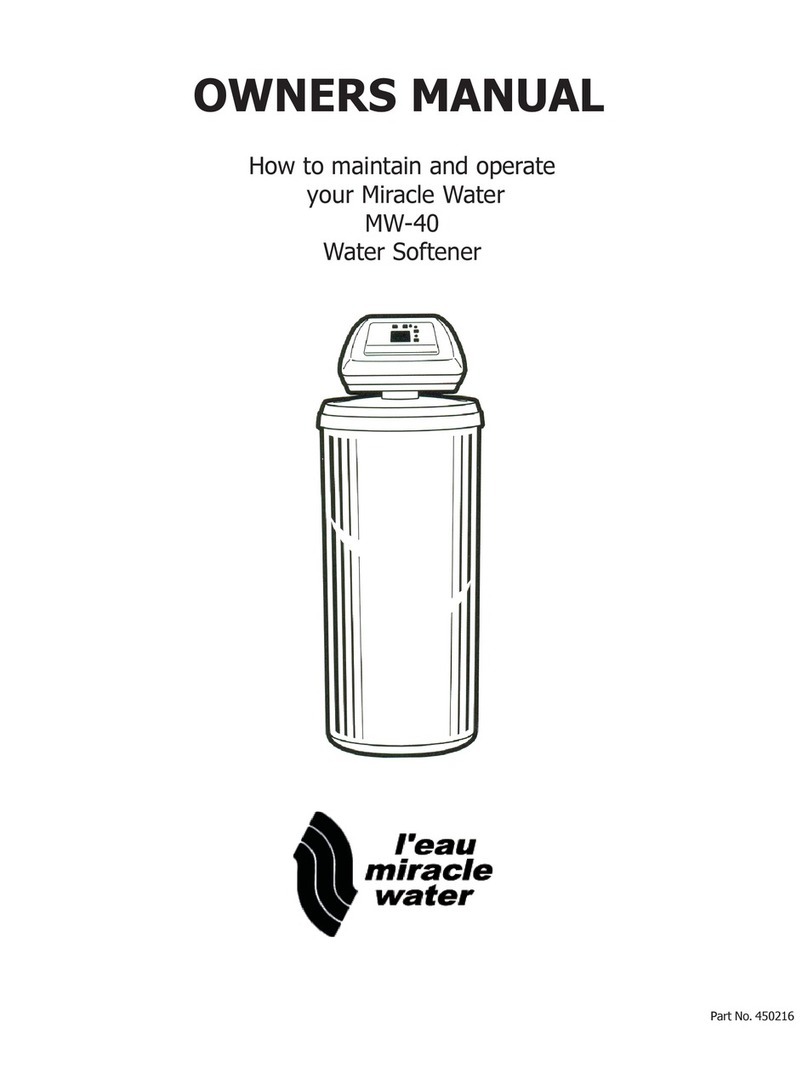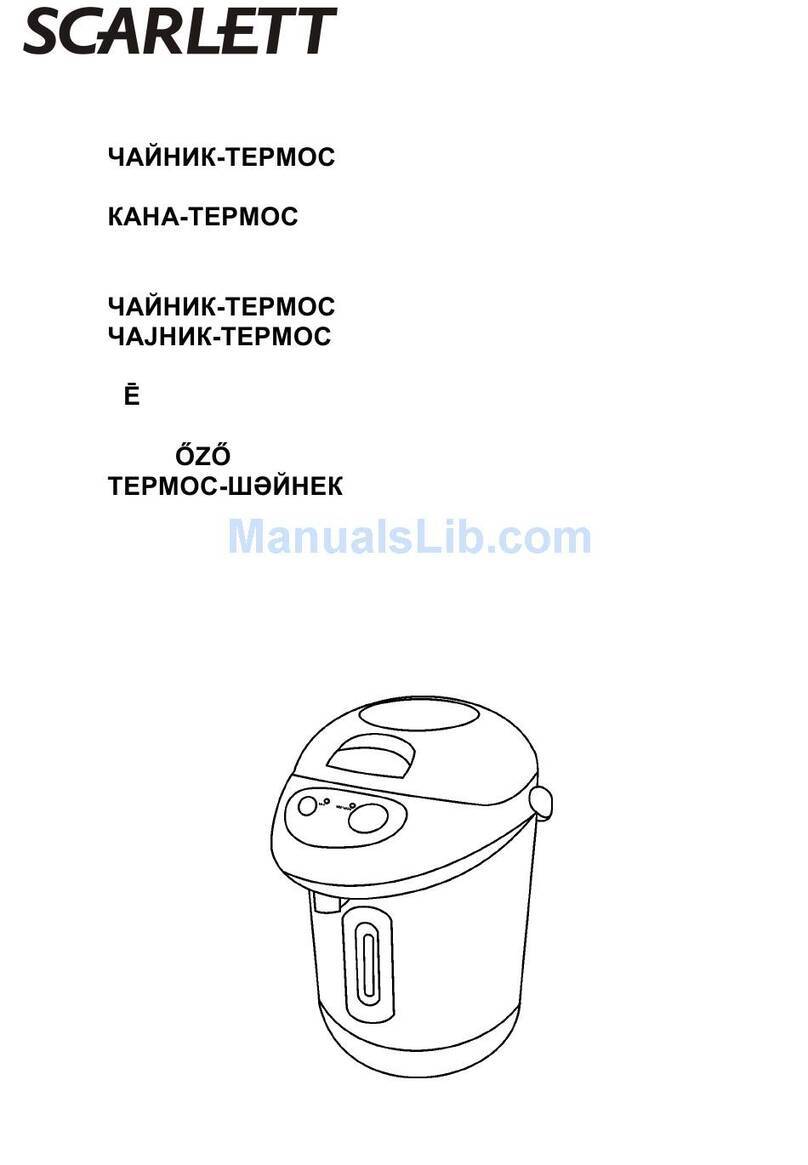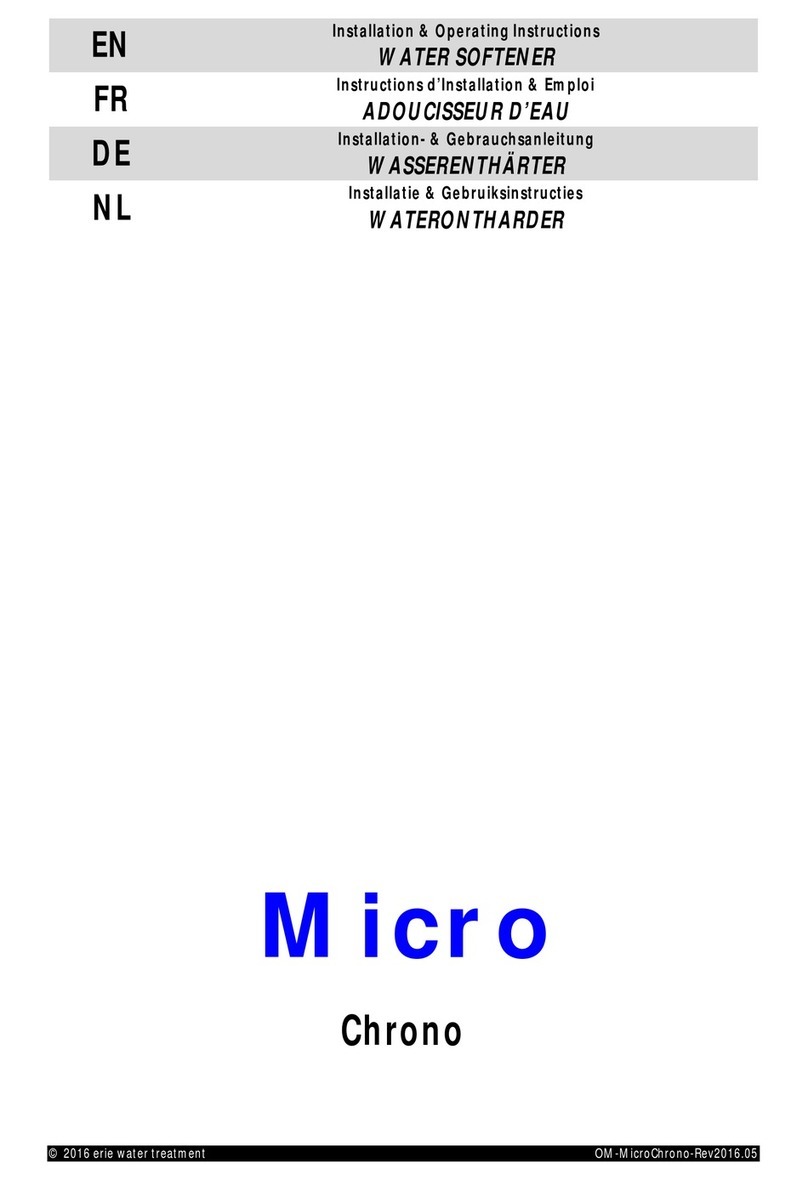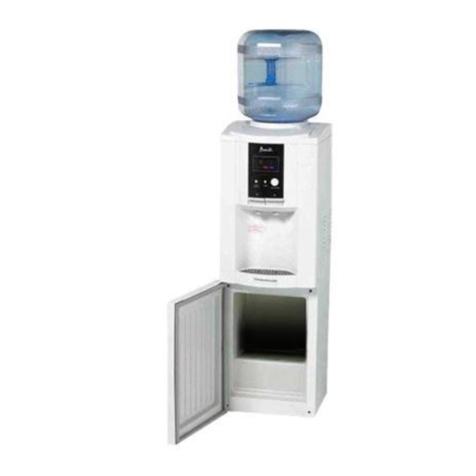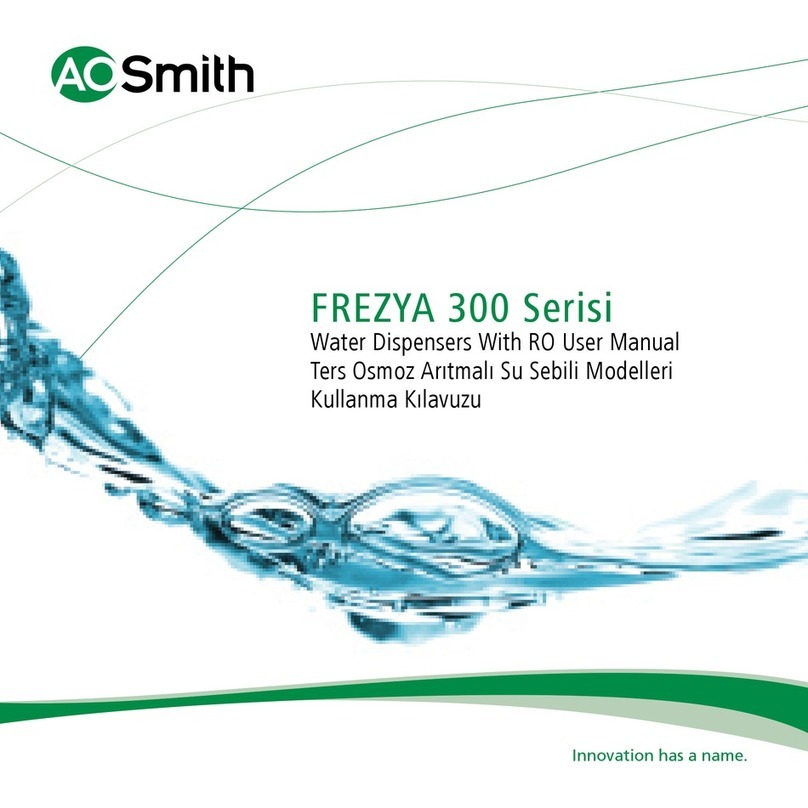3
Description of the water softener system
This water softener system includes a brine (salt) tank, resin (media) tank, and carbon (media) tank with a
backwashing control valve. Incoming water flows into the control valve and is directed down through the
carbon and then the softening resin. The carbon absorbs chlorine to remove taste and odor and to protect
the softener resin. The softener resin exchanges the hardness ions for softer ions. The softened water
then returns to the control valve where it is directed into the service lines. The CITY Series water
softener/filter is designed to be installed on chlorinated municipal water supplies.
Periodically the control valve will go through a regeneration cycle. The frequency of this regeneration
process will depend on the size of water softener, incoming water quality and amount of water used. This
cycle is factory preset to begin at 2:00 A.M. At this time the control valve will draw the brine solution out
of the salt tank and flush both the accumulated hardness and excess salt to the drain. The control valve
will then put fresh water back into the salt tank to make brine for the next regeneration cycle.
Water Quality
The water should be tested to determine the concentration, or levels of the items listed below:
Hardness - Hardness in drinking water is defined as those minerals that dissolve in water having a
positive electrical charge (cations). The primary components of hardness are calcium (Ca++) and
magnesium (Mg++) ions. But dissolved iron (Fe++) and manganese (Mn++) also contribute to total
“adjusted” hardness. Hardness produces scale, soap scum and white mineral deposits which shorten
the life of water using appliances, plumbing and fixtures. Water that has less than 1 grain of hardness is
considered to be “soft” water.
pH - A measurement of the acidity of the water. pH is reported on a scale from 0 to 14. Neutral water
has a pH of 7.0, lower values indicate acidic water. If your pH is below 6.8 you may consider installing an
acid neutralizer before the water softener to elevate the pH.
Iron - A naturally occurring metallic element. Iron levels in excess of 0.3 milligrams/liter (mg/l) combine
with oxygen causing orange or red (rust) stains on plumbing fixtures. Iron exists in some water sources in
clear water (ferrous) state, red water (ferric) state or bacterial form. Iron levels that exceed 2.0 mg/l
require special ion exchange resin for reduction, or if bacterial or ferric (red water) iron is present or iron
level exceeds 4.0 mg/l, an iron filter should be installed ahead of this water softener.
Manganese - A naturally occurring metallic element. Manganese levels as low as 0.05 milligrams/liter
(mg/l) can combine with oxygen to cause dark brown or black staining on fixtures. Additionally,
manganese can cause an odor in the water similar to a “rotten egg” smell. This water softener may
reduce manganese as well as iron; however, an iron filter may be required in some cases.
Tannin - A naturally occurring humic acid. Tannin is caused by water passing through decaying
vegetation. Coffee and Tea are prime examples of tannin in water. Tannin levels as low as 0.5
milligrams per liter can cause a yellow discoloration in water. Consult your dealer for a system designed
to remove both tannin and hardness.
Hydrogen Sulfide - A naturally occurring gas. Hydrogen sulfide, more commonly referred to as sulfur
gas, causes a distinct odor similar to “rotten eggs.” Due to its gaseous nature, hydrogen sulfide must be
tested at the well site within 1 minute of drawing the sample. If sulfur is present additional equipment will
be required. An air injecting iron filter can typically treat up to 2 milligrams per liter of sulfur gas.
















